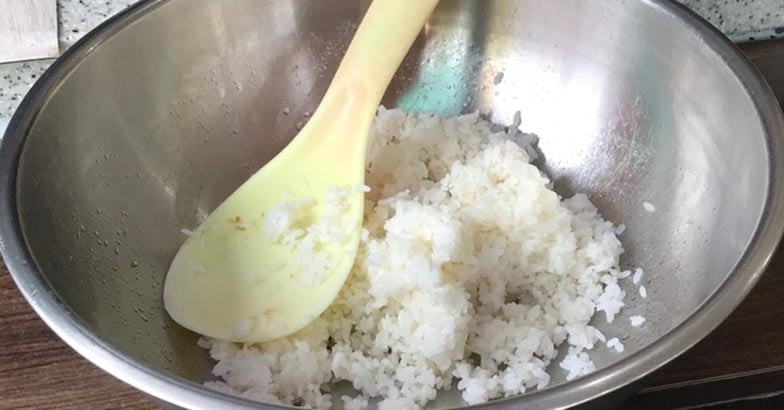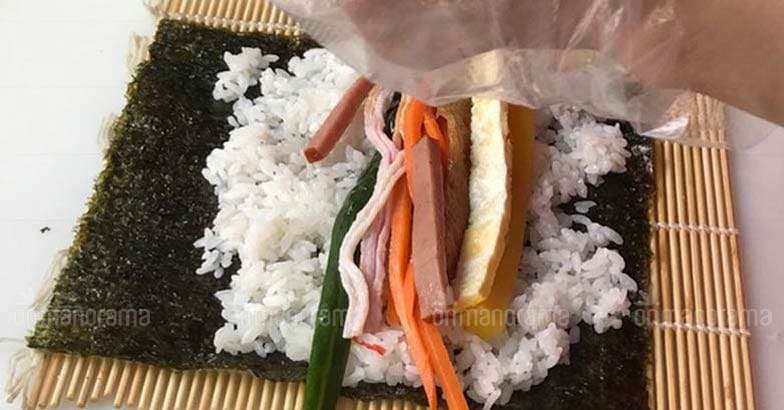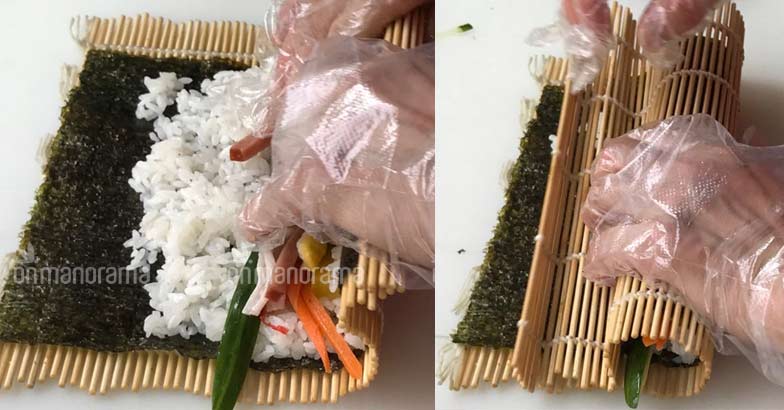This Korean sushi is the best way to serve veggies to your kids

Mail This Article
Does your child's no green platter worry you? Give their snacks box a Korean twist with kimbap or gimbap, one of the most popular takeaway lunch or picnic dish in Korea. The dish will help you serve some seasoned or boiled vegetables camouflaged along with meat or eggs.
Kimbap, which can be eaten as a snack or meal, takes the name from two of it's ingredients - dried sheets of seaweed (kim – marine algae) and cooked rice (bap).
Rice and other ingredients like vegetables, meat, and eggs (added according to taste) are rolled in seaweed sheets and served along with kimchi (fermented cabbage pickle) after slicing.

Most people call Kimbap as Korean sushi due to its preparation similarities with the Japanese version. However, sushi is prepared using rice seasoned with vinegar and sugar; where as in kimbap, rice is flavored with sesame oil and sesame seeds.

These dishes are different in the way they are eaten also – when sushi is eaten along with soy sauce, kimbap, with enough seasoned ingredients inside, can be consumed without any sauce.

The ingredients make kimbap a healthy meal, which is easy to make, for kids. Seaweed is a natural source of minerals (calcium, potassium, sodium, iron, and iodine), which are needed for metabolic regulation. It also contains many antioxidants, including vitamins and protective pigments. For vegetarians, kim is a good source of vitamin B12.

Ingredients
5 sheets of kim (seaweed paper), roasted slightly on stove
4 cups cooked rice
1 large carrot, cut into thin strips (about 1½ cup)
8 to 10 ounces spinach (1 small bunch)
Cucumber cut into thin strips
3 eggs
1 garlic clove
Salt as required
2½ tbsp sesame oil
Vegetables of choice
Preparation
To make Kimbap, all the ingredients should be sauteed separately
Add a pinch of salt and two teaspoons sesame oil to cooked rice and mix it with spoon
Let it cool down enough so its no longer steaming
Blanch spinach or saute it in sesame oil
If blanched, mix it well with 1 minced garlic clove, ½ tsp salt, and 2 tsp sesame oil
Carrots can be used raw or sauteed in sesame oil and add salt to taste.
Crack 3 eggs in a bowl, add ¼ teaspoon salt and beat it well to make fine omelette
Cut it into ½ inch wide strips
Other ingredients
Cucumber, artificial crab, ham, and other vegetables can be added according to your taste.
Beef is a very popular meat in Korea and one will find beef in most of the Korean dishes. You can add beef to Kimbap also if you want. In order to add it, marinade thinly sliced meat in soy sauce and stir fry it in pan and add to other ingredients
To make the roll
Place one sheet of seaweed on a bamboo mat and spread ¾ of the seaweed with rice
Place one strip of egg, carrots, spinach and other vegetables or meat on it
Roll the mat so the ingredients are tightly packed in the rice
The wrap should be tight enough, otherwise it will be hard to slice it
Make sure you hold the mat tight and roll slowly and tightly so the ingredients are tightly secured inside
Brush some sesame oil on the finished rolls and sprinkle some sesame seeds on top
Remove the bamboo mat and slice the kimbap
Cut each roll into ¼ inch bite size pieces with a sharp knife, occasionally wiping it with a wet paper towel or cloth to clean the starch off and to ease cutting
If the roll is too loose and your ingredients tend to fall out, use couple of rice grains as glue
For kids who do not like to eat vegetables as such, kimbap is a good try. Kimbap is served with radish pickle or kimchi in Korea, but we can substitute it with our yummy achars.
(Picture courtesy: Kimbap Shop in Suwon, South Korea. In the picture, instead of spinach, radish is used. One can also add sesame leaf, mayonnaise, tuna, or cheese depending on the taste.)

